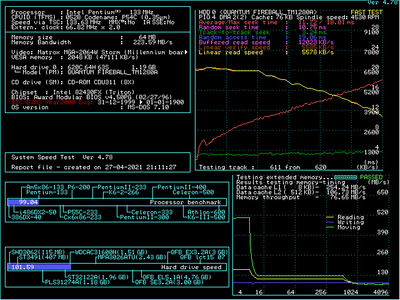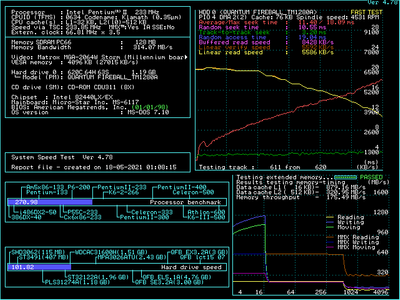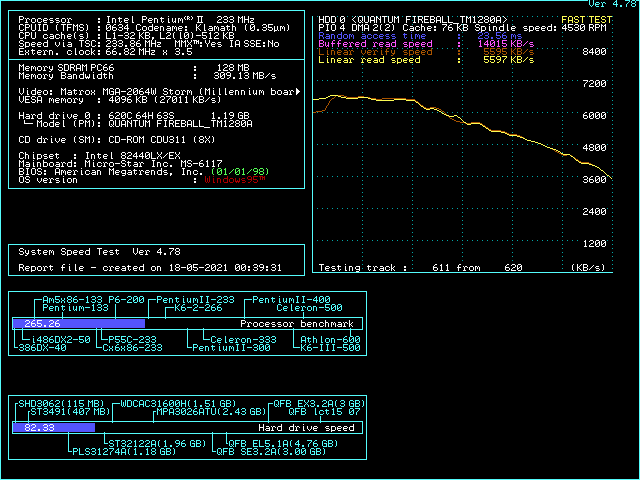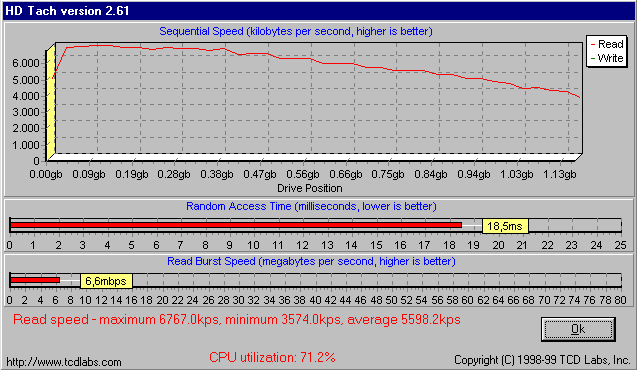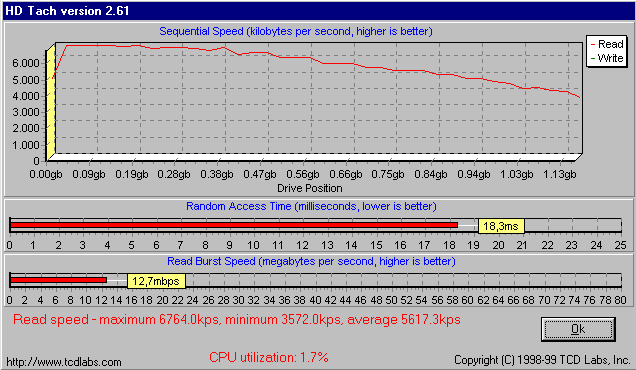First post, by auron
first, this is how this drive scores on a 430FX P133 setup. results are also identical on a 430TX+200MMX, just 100 kb/s more buffered read speed:
then, a 440LX setup with PII 233. this one i've ran in both both DOS and windows 95 with DMA enabled:
curious why the buffered read speed is so low on the PII in DOS; what's more, this 8400 kb/s number is apparently a fluke that i can't repeat as it's now only scoring about 7300 kb/s when rerunning the bench. one difference is that the PII board has an AMI BIOS while the other setups have award. i already went through the BIOS settings and enabled every IDE related option that i could find; there's even an option for 32-bit access and disabling that will cut the aforementioned score in half.
i don't think the award BIOSes from that time actually enabled IDE DMA on a BIOS level, did they? the only other explanation i could think of would be the PII's purported weakness on 16-bit code, but i find that kind of hard to believe in this case.
